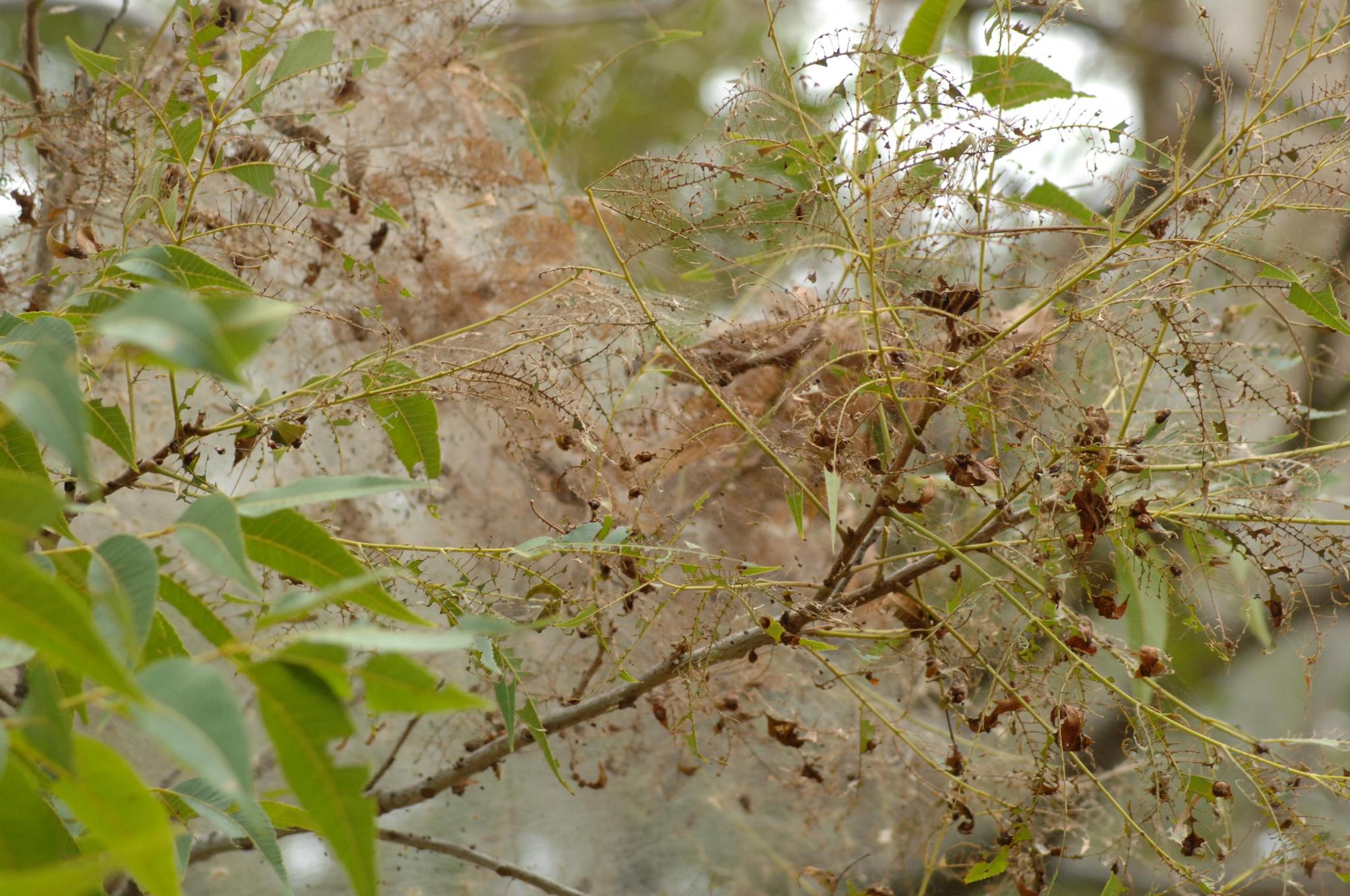
A pecan tree at Lucio Park. Daily Record photo by Anita Miller
Webworm season is in full bloom
Some former shade trees in the San Marcos area aren’t providing much anymore.
It’s mostly pecans, but hackberries and mulberries have been affected as well by the seasonal plague of webworms, aka tent caterpillars.
While it makes for a mess as well as cutting down on the shade the tree provides, the infestation isn’t going to do any long-term harm, according to Kelly Eby, urban forester for the city of San Marcos.
Although many trees look denuded of almost any green leaves, Eby said the worms aren’t like to cause the tree’s demise. “It wouldn’t be in their best interest to kill their food source,” she said. Eby said end-of-summer phone calls regarding the caterpillars are routine, though any particular tree can be infested a few times a year. “We’re kind of in the last cycle. It looks the worst … they’ve already defoliated most of the tree.”
This year the situation is bad in Lucio Park and other areas near the San Marcos River on public and private land. Eby says it’s uncommon for the same trees to be infested year upon year. “They don’t always go for the same trees every year,” she said. “From my observation it moves around town,” meaning that neighborhoods that were hard hit last year are faring better this season.

Two pecan trees at Lucio Park, heavily infested with tent caterpillars, stand out against surrounding healthy ones. Daily Record photo by Anita Miller
She recommended that homeowners whose trees are infested “remove or poke holes in the webs with long sticks, poles or high pressure water,” something that allows predators like wasps and birds to get at the caterpillars inside — natural pest control.
That said, Eby added that it’s not standard practice for city workers to disrupt the webs on public property “unless it’s in a high use area.”
The good news, Eby said, is that fall is coming, “so those leaves were going to drop soon anyway.”
“Once the temperatures change, depending on the year we can have three or four cycles — laying their eggs, hatching out and increasing their population. I think we’re kind of in our last cycle.”
The fact the area is in “moderate” drought is another stressor to trees, Eby said. She advised homeowners to do a deep watering of their trees “if we don’t get an inch of rain in a month.”
Eby said mulch from one to three inches deep should be placed around the tree “out to the edge of the tree canopy” and to give the tree “a good soaking” to help it recover from the impact of the drought.
Twitter: @AnitaMillerSMDR











